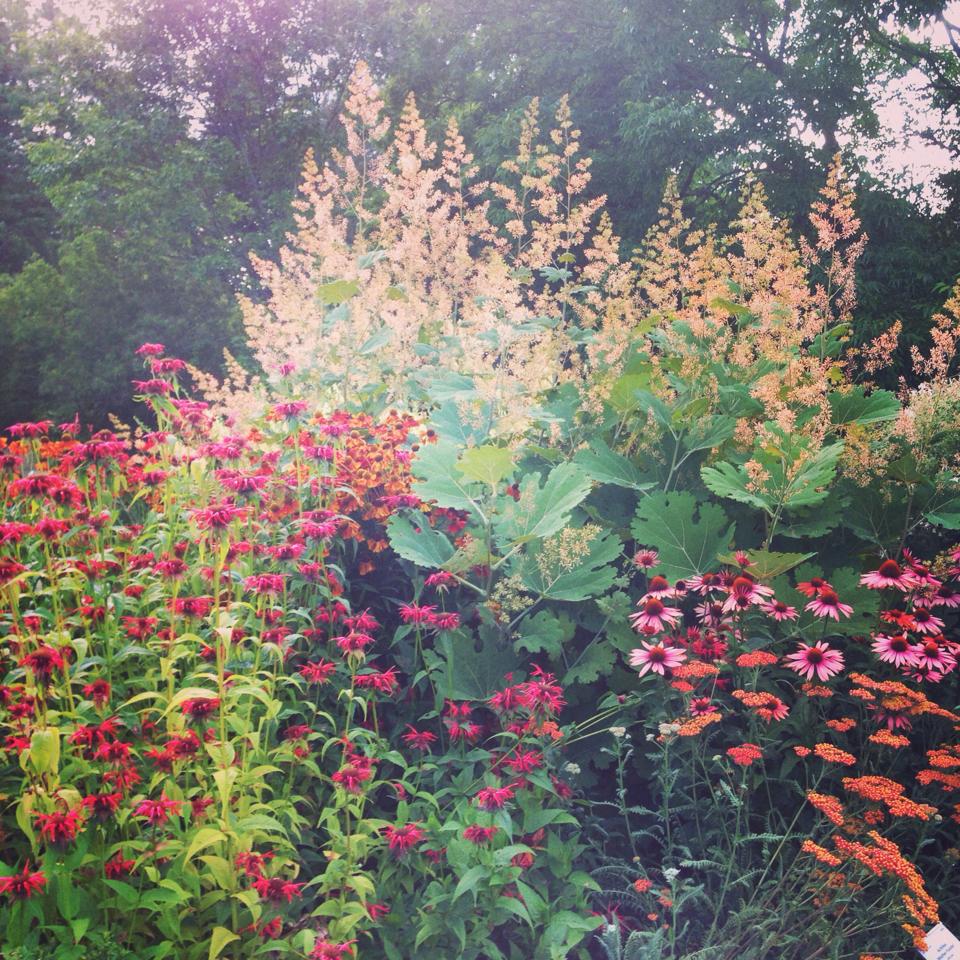Plant Pillars
How to Document the Aesthetic Expressions of Plants?
DOI:
https://doi.org/10.7577/formakademisk.5436Keywords:
plant materials, aesthetic values, garden design, research methods, plant catalogueAbstract
ABSTRACT
To sustain the idea of the design of a garden it is essential to look at the plant materials that they are constructed with. We as gardeners, do not use solid materials as our building blocks, we rely on malleable plant materials to build our design. The materials vary over the season, which makes them complex to define.
The impressions of a garden is experienced through the expressions of its aesthetics, and without solid documentation of the form, structure, colour schemes and more, it is difficult to form an understanding of the garden as a whole.
The essence of a design lies in the plant materials that the gardener crafts and arranges in a specific way to create an aesthetic expression. In my work I have developed a method for the craftsman (or –woman) where the intangible plant materials and the subtle/distinct effects of colour and form and their aesthetic values can be measured utilising the system of a plant catalogue.
How will we understand what makes a good and sustainable design if we don’t find methods to document and assess the aesthetics and the craftsmanship behind it?
References
Brookes, J. (1987). Gardens of paradise: The history and design of the great Islamic gardens. New Amsterdam.
Dunnett, N., & Hitchmough, J. (Eds.) (2004). The dynamic landscape: Design, ecology and management of naturalistic urban planting. Spon Press. https://doi.org/10.4324/9780203402870
Edwards, B. (2004). Color: A course in mastering the art of mixing colors. Jeremy P. Tarcher/Penguin.
Estvad Petersen, S. (1991). Paradiset: den islamiske have. Borgen.
International Council on Monuments and Sites (ICOMOS) (1981). The Florence Charter: Historic Gardens. ICOMOS. https://www.icomos.org/images/DOCUMENTS/Charters/gardens_e.pdf
Itten, J. (1988). The elements of color: A treatise on the color system of Johannes Itten based on his Book, The Art of Color. Chapman and Hall.
Hansen, R., & Stahl, F. (1993). Perennials and their garden habitats (4. ed.). Cambridge Univ. Press.
Hobhouse, P. (1991). Flower gardens. Lincoln.
Hobhouse, P. (2004). Trädgårdskonstens historia 3000 år [The history of garden art 3000 years]. Natur och kultur.
Hobhouse, P., Hunningher, E., & Harper, J. (2006). Gardens of Persia (New ed.). Cassell Illustrated. (Original work published 2003)
Jekyll, G. (1995). Colour schemes for the flower garden (New ed.). Frances Lincoln.
Jones, O. (1982). The grammar of ornament: Illustrated by examples from various styles of ornament. Van Nostrand Reinhold.
Khansari, M., Moghtader, M. Reza & Yavari, M. (2004). The Persian Garden: Echoes of Paradise. Mage Publishers
Manzoor, S. (1993). Pardis gardens in Iran. Chalmers University of Technology.
Nilsson, N. (2013). Färgbilden som redskap vid växtkomposition [The color image as a tool in plant composition]. Göteborgs universitet.
Royal Horticultural Society (1999). The Royal Horticultural Society new encyclopedia of plants and flowers (3rd [rev. and expanded] ed.). Dorling Kindersley.
Rusten Åmot, B., & Ophus, B. (2014). Z SPOR – #mønster #dekor [Z TRACK – #pattern #decor]. Norges Husflidslag.
Sørensen, C. T. (1959). Europas havekunst: fra Alhambra til Liselund [European garden art: from the Alhambra to Liselund]. Gads Forl.
Sørensen, C. T. (1963). The origin of garden art: = Havekunstens oprindelse. Arkitektens Forl.
Turner, T. (2005). Garden history: Philosophy and design 2000 BC-2000 AD (1st ed.). Spon Press. https://doi.org/10.4324/9780203589335

Downloads
Published
How to Cite
Issue
Section
License
Copyright (c) 2023 Teresia Millberg

This work is licensed under a Creative Commons Attribution-NoDerivatives 4.0 International License.
Authors who publish with this journal agree to the following terms:
- Authors retain copyright and grant the journal right of first publication with the work simultaneously licensed under a Creative Commons Attribution 4.0 License that allows others to share the work with an acknowledgement of the work's authorship and initial publication in this journal.
- Authors are able to enter into separate, additional contractual arrangements for the non-exclusive distribution of the journal's published version of the work (e.g., post it to an institutional repository or publish it in a book), with an acknowledgement of its initial publication in this journal.
- Authors are permitted and encouraged to post their work online (e.g., in institutional repositories or on their website) prior to and during the submission process, as it can lead to productive exchanges, as well as earlier and greater citation of published work (See The Effect of Open Access).
- The author(s) must manage their economic reproduction rights to any third party.
- The journal makes no financial or other compensation for submissions, unless a separate agreement regarding this matter has been made with the author(s).
- The journal is obliged to archive the manuscript (including metadata) in its originally published digital form for at least a suitable amount of time in which the manuscript can be accessed via a long-term archive for digital material, such as in the Norwegian universities’ institutional archives within the framework of the NORA partnership.
The material will be published OpenAccess with a Creative Commons 4.0 License which allows anyone to read, share and adapt the content, even commercially under the licence terms:
This work needs to be appropriately attributed/credited, a link must be provided to the CC-BY 4.0 licence, and changes made need to be indicated in a reasonable manner, but not in any way that suggests that the licensor endorses you or your use.



